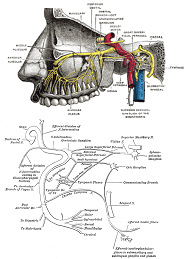 Medical Services
Medical Services
Sphenopalatine Ganglion Block
SPHENOPALATINE GANGLION BLOCK - A SIMPLE BUT UNDERUTILIZED THERAPY FOR PAIN CONTROL
For some patients with acute or chronic pain, not responding to the usual treatment modalities, Dr. Weinstein has successfully used this technique in the relief of a wide variety of painful conditions ranging from headache to low back pain.
Realizing the great utility and the simplicity of this therapy one cannot help but ask why this simple, safe and effective therapy still remains relatively underutilized.
DESCRIPTION
Dr. Weinstein will insert applicators wrapped with medicated cotton into your nose. As they pass a certain point, your eyes may tear. This tearing is natural, so don't worry about it. You will not have any pain from the applicator, and it won't cause you discomfort.
The applicators are approximately 6 inches long and are wrapped with absorbent cotton around the other end.
Dr. Weinstein gently inserts the first of the four applicators into the nostrils (two in each nostril). The cotton is dipped into a solution of 4% lidocaine.
The applicators are wiggled so that they will pass through various apertures until it reaches a small button at the back or the throat called a ganglion. This process is called a sphenopalatine ganglion nerve blockade. In most cases the entire procedure takes about two minutes.
You are not going to feel any results immediately, so just relax and don't worry about anything. You may walk around or sit.
The patient is observed for 20 minutes with monitoring of vital signs, then discharged home.
The side effects of sphenopalatine ganglion block are few, including allergy to lidocaine which is rare, irritation to the nose or epistaxis which rarely happens in the skilled hand.
HISTORY
The sphenopalatine ganglion blockade is nothing new. In fact, it goes back to 1909, to Geenfield Sluder. Dr. Sluder was a professor and Director of the Department of Otolaryngology at Washington University School of Medicine in St. Louis.
After looking for some form of therapy for the treatment of head pains, he concluded that the little ganglion situated in the head just above the to p of the nose, was an important pathway for pain.
However, due to the fact that many of the reports in the literature concerning its application were published in the 1930s the clinical use of this therapeutic modality, in our opinion, has been much underutilized at the present.
ANATOMY
Sphenopalatine ganglion consists of the largest aggregate of neurons in the head outside of  the brain and is conveniently located in the sphenopalatine (pterygopalatine) fossa at the back or the nose. This location which makes it very accessible to be blocked.
the brain and is conveniently located in the sphenopalatine (pterygopalatine) fossa at the back or the nose. This location which makes it very accessible to be blocked.
The Sphenopalatine ganglion receives sensory connections from the maxillary nerve of the Trigeminal Nerve (V) system. There are also some autonomic connections to the Facial Nerve (VII).
One also has to keep in mind that the upper cervical nerve roots (C2,C3,C4,) have some indirect connection with the sphenopalatine ganglion which in turn is connected with the trigeminal nerve system via the maxillary nerve.
Therefore it would not be unreasonable to appreciate that pain from the upper cervical spine can cause referred symptoms into the head and facial area, and vice versa, this might explain why sphenopalatine ganglion block would relieve headache, facial pain, pain in the neck and upper back.
Prime Healthcare Providers is not responsible for the content of any linked site. See our Terms and Conditions.

